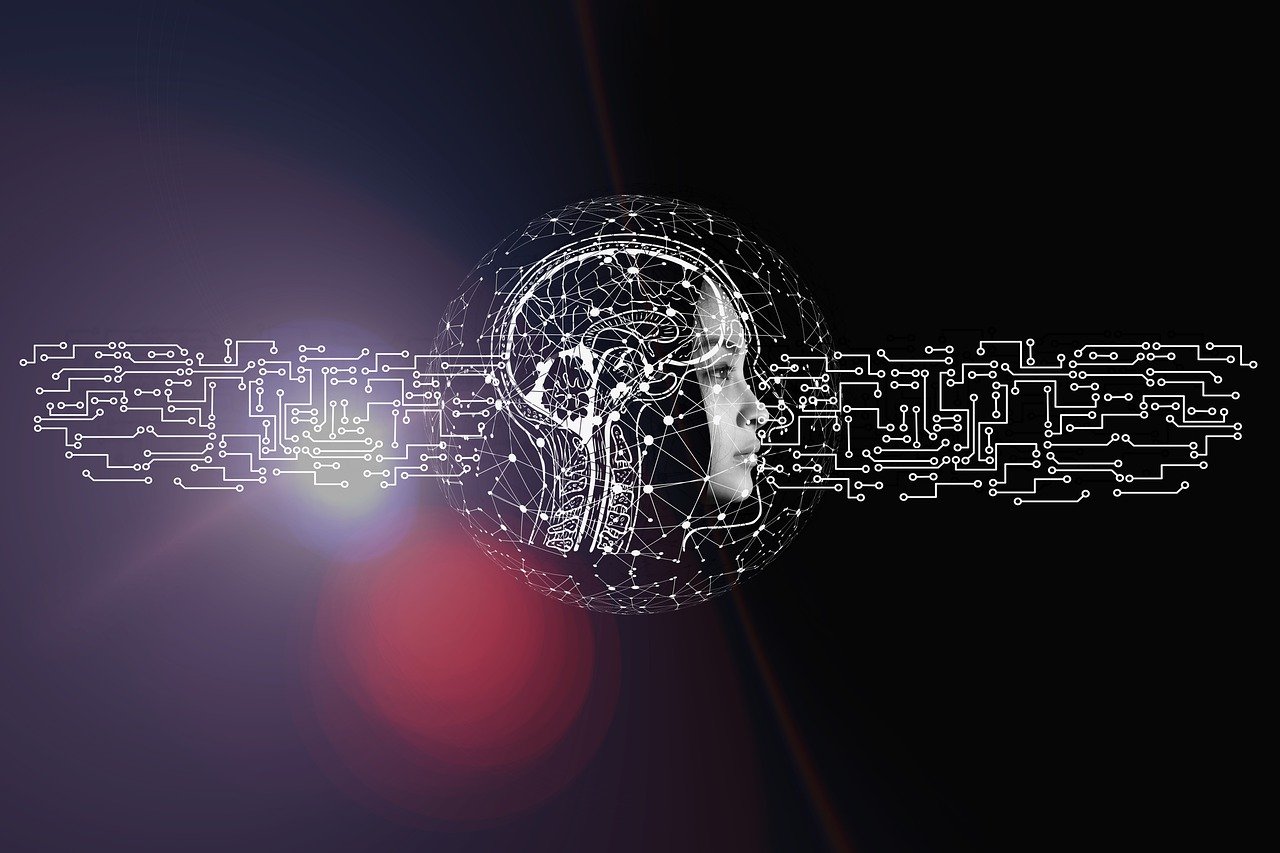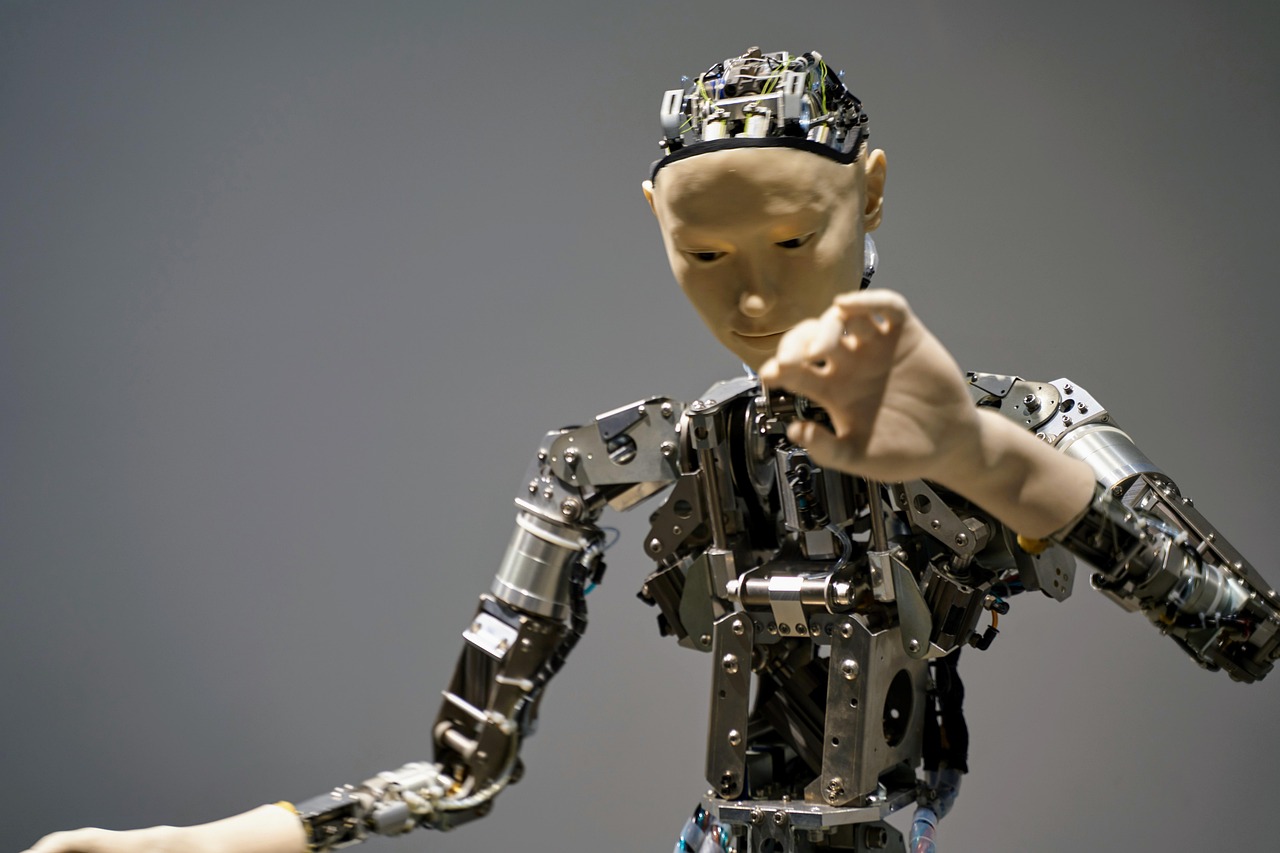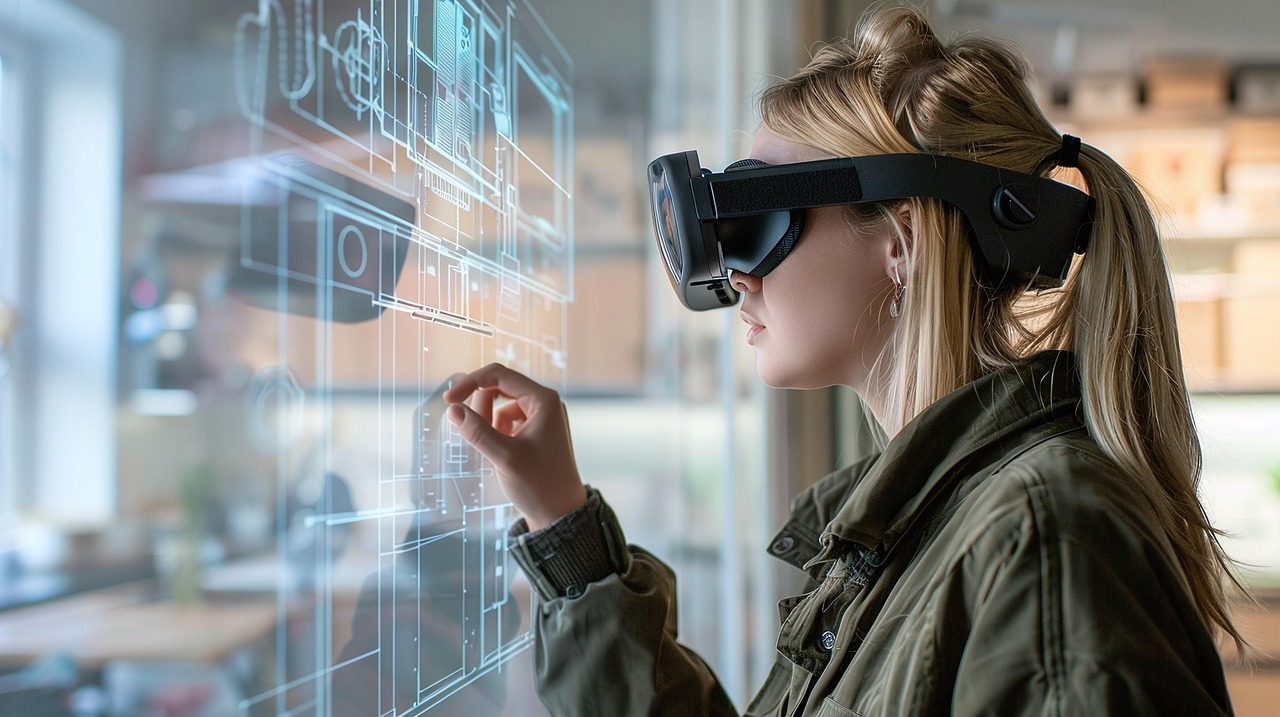In everyday life, humans effortlessly navigate through space, understand object positions, and estimate distances – all thanks to depth perception. For machines, replicating this ability is a significant technical challenge. This is where 3D computer vision comes in. It’s a field of study that equips machines with the ability to interpret the world in three dimensions by analyzing visual input like images and videos.
While 2D computer vision deals with flat image analysis – detecting colors, shapes, or edges – 3D computer vision adds another layer: depth. This capability opens up possibilities for automation, robotics, augmented reality, autonomous vehicles, and more. In this article, we explore how 3D computer vision works, the techniques behind it, and its growing role across industries.

What Is 3D Computer Vision?
3D computer vision refers to a set of techniques and tools used to extract, process, and interpret three-dimensional information from visual data. These systems aim to reconstruct the shape, size, and spatial relationships of objects using input from one or more 2D images or specialized sensors. The goal is to digitally recreate the geometry of real-world scenes for machines to interact with.
3D computer vision combines principles from geometry, photogrammetry, optics, and machine learning. It uses mathematical models of cameras, algorithms for depth reconstruction, and often machine learning models to analyze depth and spatial structure.
Core Concepts in 3D Computer Vision
Understanding how machines analyze 3D scenes starts with a few fundamental principles.
Depth Perception
Depth perception allows systems to estimate how far objects are from the sensor or camera. Several visual cues can be used for this, such as:
- Stereo vision: Uses two cameras spaced apart to calculate depth by comparing image disparities.
- Shading and texture gradients: Observes how light and surface textures change across a surface.
- Motion parallax: Analyzes how objects move at different speeds relative to the observer’s movement.
Spatial Dimensions and Coordinate Systems
3D vision relies on defining objects in a three-axis coordinate system: X (width), Y (height), and Z (depth). These coordinates form the basis for creating 3D models of objects and scenes.
Camera Models and Calibration
For a system to accurately interpret depth, it must understand the geometry of the camera itself. Camera calibration includes:
- Intrinsic parameters: Internal properties like focal length and lens distortion.
- Extrinsic parameters: The camera’s position and orientation in space.
Correct calibration is essential for transforming 2D image data into accurate 3D coordinates.
Homogeneous Coordinates and Projective Geometry
Homogeneous coordinates represent points in projective space using an additional dimension, typically denoted as W. This allows for more flexible representation of transformations such as translation, rotation, and projection, and simplifies the handling of points at infinity. Projective geometry helps map 3D objects onto 2D image planes, which is the foundation for image-based depth estimation techniques.
Passive and Active 3D Reconstruction Methods
3D data can be gathered using either passive or active techniques, depending on whether the system emits signals or only uses ambient light.
Passive Reconstruction Techniques
Passive methods rely on analyzing naturally available visual data, such as images or video captured under existing light conditions.
1. Shape from Shading
This technique estimates surface shapes by studying how shadows and light fall across a surface. Algorithms infer depth based on shading gradients, assuming the light source and surface reflectance properties are known.
2. Shape from Texture
By analyzing distortions in surface textures, systems can estimate the curvature and orientation of the object. This approach assumes the texture pattern on the object is uniform and known.
3. Depth from Defocus
This method typically requires capturing multiple images of the same scene with varying focus settings. By analyzing how the blur changes between these images, the system can infer depth information. Using a single image may be possible under specific assumptions but is less reliable.
4. Structure from Motion (SfM)
SfM constructs 3D models by analyzing a sequence of images taken from different viewpoints. It identifies common features across frames and triangulates their 3D position based on camera motion.
Active Reconstruction Techniques
Active methods project controlled signals, such as lasers or structured light, onto the environment and then analyze how those signals are reflected back.
1. Structured Light
This technique projects a pattern (such as grids or stripes) onto a surface. The way the pattern deforms across the surface helps calculate its 3D shape.
2. Time-of-Flight (ToF)
ToF sensors measure how long it takes for emitted light to bounce off a surface and return to the sensor. This time is converted into distance, providing depth data for each pixel.
3. LiDAR
LiDAR works similarly to ToF but uses laser light to map surroundings with high precision. It’s widely used in autonomous vehicles and large-scale mapping.
Deep Learning and 3D Vision
Machine learning, particularly deep learning, has become increasingly vital in the analysis of 3D visual data. These techniques allow systems to extract patterns and insights from large volumes of complex information that traditional methods might struggle to interpret effectively.
One prominent approach involves the use of 3D Convolutional Neural Networks (3D CNNs). Unlike their 2D counterparts, which operate on flat image data, 3D CNNs are designed to process volumetric inputs such as three-dimensional medical scans or mesh data. These networks apply filters across three spatial dimensions, making them particularly well-suited for tasks requiring an understanding of the structure and content of 3D environments. They are often used in applications like recognizing objects in 3D scenes, segmenting anatomical structures in medical images, and analyzing dynamic sequences in video by capturing both spatial and temporal information.
Another key area of focus is point cloud processing. Point clouds represent spatial datasets made up of individual data points in three-dimensional space, typically obtained through technologies like LiDAR or depth-sensing cameras. Processing this data involves several steps. The first is registration, which ensures that multiple scans of the same object or scene are properly aligned. Segmentation follows, which involves separating and identifying distinct elements within the scene. To ensure quality, noise filtering is applied to remove stray or inaccurate data points. Finally, surface reconstruction is used to convert the point cloud into a structured 3D model, such as a mesh, which can then be used for further analysis or visualization.
3D object detection is another major capability enabled by deep learning. While 2D object detection identifies the position of objects in flat images, 3D detection determines not only the presence of an object but also its precise location, size, and orientation within a three-dimensional space. This capability is critical in fields like robotics and autonomous navigation, where machines must make real-time decisions based on accurate spatial awareness. Recognizing where an object is in space, how large it is, and which direction it faces provides systems with the information they need to navigate, avoid collisions, or interact with their environment in meaningful ways.
The Process of 3D Reconstruction from 2D Images
Extracting 3D data from 2D images involves several steps, especially when using passive techniques:
- Image Acquisition: Capture multiple views of a scene or object.
- Feature Detection: Identify key points in each image (edges, corners, patterns).
- Feature Matching: Link the same features across different images.
- Camera Pose Estimation: Calculate the position and angle of each camera relative to the scene.
- Triangulation: Use geometric principles to estimate the 3D positions of matched features.
- Surface Construction: Convert 3D points into continuous surfaces or meshes.
- Texture Mapping (optional): Apply color or texture data from original images to enhance realism.
Real-World Applications of 3D Computer Vision
The ability to perceive depth and understand spatial relationships has opened new doors across a wide range of industries. As 3D computer vision technologies mature, their integration into real-world systems is becoming more common, supporting automation, improving safety, and enhancing decision-making.

Robotics and Automation
In robotics, 3D computer vision plays a crucial role by enabling machines to interact with physical environments more effectively. Robots equipped with depth perception can identify, grasp, and manipulate objects with greater precision. This capability is particularly valuable in industrial automation, where machines are tasked with assembling components or inspecting products for defects. Additionally, drones rely on 3D vision systems to navigate complex spaces, avoid obstacles, and maintain spatial awareness during flight.
Autonomous Vehicles
Self-driving cars and other autonomous systems depend heavily on 3D vision to interpret their surroundings. These vehicles use data from LiDAR, stereo cameras, and time-of-flight sensors to build a detailed map of the environment. This allows them to detect other vehicles, pedestrians, and road features in real time. Accurate depth information is critical for making safe navigation decisions, maintaining lanes, and responding to dynamic changes in traffic conditions.
Healthcare
The medical field benefits from 3D computer vision in various diagnostic and procedural applications. Techniques like CT and MRI scans generate volumetric data, which can be reconstructed into 3D models of internal anatomy. These models assist doctors in visualizing complex structures, planning surgeries, and guiding instruments during procedures. The enhanced spatial understanding improves accuracy and reduces the risks associated with invasive operations.
Augmented and Virtual Reality (AR/VR)
In AR and VR environments, 3D computer vision is essential for creating immersive, responsive experiences. By tracking the position and movements of users, these systems can dynamically adjust virtual content to align with the real world. This enables interactive simulations for education and training, more realistic gaming experiences, and visualization tools for design and engineering tasks. Depth awareness ensures that virtual elements behave consistently with physical surroundings.
Retail and Logistics
Retailers and logistics providers are leveraging 3D vision to improve efficiency and customer experience. In warehouses, systems use depth data to identify, locate, and track individual items, even in cluttered settings. This improves inventory management and supports automation in storage and retrieval. For logistics, 3D scanning of packages allows for better space optimization during packing and shipping. In customer-facing settings, augmented reality applications enable users to preview products in their actual environment before making a purchase, bridging the gap between digital browsing and physical interaction.
Construction and Architecture
3D computer vision is transforming how buildings and infrastructure projects are designed and managed. Drones and handheld devices capture spatial data that can be processed into detailed 3D models of construction sites or existing structures. These models help teams monitor progress, detect discrepancies, and simulate design changes. This technology also supports the planning phase by allowing stakeholders to visualize completed projects before construction begins, improving communication and reducing costly revisions.
Security and Surveillance
In surveillance and public safety systems, 3D computer vision provides more comprehensive monitoring capabilities. Unlike traditional systems that only capture flat images, 3D-enabled systems can analyze human movement, detect anomalies, and track objects or individuals across different zones. These capabilities enhance crowd management, support behavioral analysis, and increase situational awareness in both public and private spaces.
Ethical Considerations in 3D Computer Vision
As the technology becomes more widespread, ethical concerns are emerging.
- Privacy: Systems that gather detailed 3D data in public spaces can raise privacy issues, especially when individuals are recorded without consent.
- Bias in Data: Training data that lacks diversity can result in biased systems, especially in applications like facial recognition.
- Security Risks: Like any connected system, 3D vision platforms may be vulnerable to cyberattacks or misuse of personal data.
Recommended Practices
- Use diverse and representative datasets
- Maintain transparency in how algorithms work
- Develop clear privacy policies and user consent mechanisms
Challenges and Limitations
Despite its many advantages, 3D computer vision also comes with a set of challenges that impact its development and adoption. One of the most prominent limitations is the high computational cost. Processing 3D data, especially in real time, demands substantial processing power and memory. This can be a barrier for applications running on limited hardware or edge devices.
Hardware complexity is another concern. Many 3D vision systems require multiple cameras, depth sensors, or laser-based equipment to capture spatial data accurately. Integrating and calibrating this hardware can be technically demanding and adds to the cost and maintenance overhead.
Environmental factors also affect performance. Changes in lighting, motion blur, surface reflectivity, or occlusions can introduce errors in depth estimation and object detection. These variables can reduce the reliability of 3D vision systems in uncontrolled or dynamic environments.
Additionally, the volume of data generated by 3D models and point clouds is significantly larger than that of 2D images. This not only increases storage requirements but also slows down data transmission and processing. Efficient compression, filtering, and data management techniques are necessary to keep systems scalable and responsive.
While these limitations do not prevent the use of 3D computer vision, they highlight the importance of careful system design and the need for ongoing advancements in hardware and algorithm efficiency.

The Future of 3D Computer Vision
The field of 3D computer vision is evolving rapidly, driven by advancements in artificial intelligence, sensor technology, and processing capabilities. As these technologies continue to improve, we can expect 3D vision systems to become faster, more accurate, and more widely available. Several key developments are shaping the direction of this growth:
- Real-time 3D understanding: One of the most significant trends is the push toward real-time scene analysis. As processing power increases, systems are becoming capable of interpreting depth and spatial relationships on the fly, enabling immediate decision-making in applications like robotics, autonomous navigation, and interactive simulations.
- Integration with edge computing: There is a growing emphasis on performing complex computations directly on edge devices, such as drones, smartphones, and embedded systems. This reduces the need for cloud processing, minimizes latency, and allows 3D vision applications to function in environments with limited connectivity.
- Greater accessibility: As hardware becomes more affordable and open-source software continues to advance, more organizations are able to adopt 3D computer vision technologies. This democratization is enabling small businesses, researchers, and developers to explore and apply 3D vision without the high costs that once restricted access.
- Improved reconstruction techniques: Ongoing research is enhancing the accuracy and efficiency of 3D reconstruction methods. New algorithms are making it possible to create detailed models from fewer inputs, with greater resistance to noise and environmental variation. These improvements are helping expand the use of 3D vision in fields like medical imaging, surveying, and digital content creation.
Collectively, these advancements point toward a future where 3D computer vision becomes an integral part of intelligent systems, embedded in everything from personal devices to industrial infrastructure.
Conclusion
3D computer vision is no longer just an experimental technology used in labs or high-end research. It’s become a practical tool that’s quietly reshaping industries, from how robots move in factories to how surgeons prepare for operations or how your phone maps your face. At its core, it’s about helping machines see the world more like we do, with a sense of depth and space.
As the technology gets faster, more accessible, and more accurate, we’re likely to see it integrated into more everyday tools and devices. That doesn’t mean the challenges have disappeared, there are still hurdles in cost, hardware, and privacy, but the direction is clear. 3D computer vision is quickly becoming a foundational part of how smart systems understand and interact with the world around them.
Frequently Asked Questions
What is 3D computer vision?
3D computer vision is a technology that allows machines to understand the shape, size, and position of objects in a three-dimensional space using images or sensor data. It’s used to recreate digital versions of real-world scenes that computers can analyze or interact with.
How is 3D computer vision different from 2D computer vision?
While 2D computer vision looks at flat images – identifying colors, edges, or shapes – 3D computer vision adds depth. It helps machines figure out how far things are, how big they are, and where they are located in space.
What are some real-life uses of 3D computer vision?
You’ll find 3D vision in self-driving cars, factory robots, drones, medical imaging systems, AR/VR apps, and even retail tools like virtual fitting rooms. It’s being used anywhere machines need to understand space and distance.
Does 3D computer vision always require special hardware?
Not always. Some systems use just regular cameras and clever algorithms to estimate depth from images. Others use more advanced tools like LiDAR sensors or stereo cameras to capture accurate 3D information.
Is 3D computer vision only used in high-tech industries?
It’s definitely used in high-tech fields, but it’s also becoming more common in everyday tools, like smartphones with face recognition or retail apps that let you preview furniture in your room. As hardware gets cheaper and software improves, 3D vision is finding its way into more accessible products.
